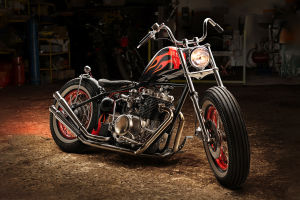Over a hundred years have passed, and unexpected changes have occurred in automobiles. Looking back at the hundred-year history of automotive evolution, you'll find many models still exuding charm today. Their classic vintage designs possess an extraordinary allure.
The term "vintage car" generally refers to automobiles made before 1931 or even older, representing a nostalgic relic of the past, vehicles that were once used and still operable today.
The concept of vintage cars emerged in 1973, appearing in a British magazine titled "Celebrities and Vintage Cars." Due to the strong personification of the term "vintage car," it quickly gained recognition among enthusiasts and rapidly spread worldwide, becoming the universal term for antique automobiles.
However, to this day, there's no universally accepted standard definition for vintage cars, and automotive historians and enthusiasts continue to debate. The Vintage Car Club of America considers brands or models it favors (such as those produced between 1925 and 1948) as entirely classic cars, defining them as "exceptional automobiles with excellent design, high craftsmanship standards, and production," showing a preference for American.
1. 1909 - Ford Model T
Regarding classics, the Ford Model T undoubtedly takes the lead.
This vehicle pioneered the use of assembly line mass production instead of traditional individual handcrafting, reducing production costs while increasing output. It was also responsible for the rapid popularization of automobiles. Over its 20-year sales cycle, the Ford Model T accumulated sales of over 15 million units, creating an incredibly brilliant sales record.
2. Around 1915 - Ford Model T
While the Model T led automobiles into the lives of ordinary people, car design was also evolving.
As early as the 1920s, Chrysler engineers discovered the impact of air resistance on vehicles. To reduce drag, increase speed, and lower fuel consumption, boxy cars gradually evolved into streamlined vehicles. In 1934, the first car with a streamlined body, the Chrysler Airflow, debuted at the New York Auto Show and became the trendsetter for streamlined body design.
3. SSK
It is one of the most elusive (and expensive) antique cars in the world, favored in early 20th-century racing events. The 710 Trossi racing car was named after its first owner, Count Carlo Trossi, who later became chairman of the Ferrari team.
Similarly, the "K" in the name (Kompressor) indicates a supercharged engine—this engine had a displacement of 6.9 liters, producing an astonishing 300 brake horsepower. Today, only five of the 710 SSKs are still operational, making them some of the rarest vehicles on Earth.
4. 1934 - Chrysler Airflow
In 1935, Volvo introduced another car with a streamlined body, the PV36 Carioca, followed by the Peugeot 402 officially entering the market. Although these two cars still used traditional frame structure bodies, their exterior designs were similar to the Chrysler Airflow.
5. 1949 - Ford V8 Sedan
The Ford V8 had a distinctive appearance and was the first to incorporate ergonomic theory into the overall design of automobiles, reflecting a people-centric design philosophy.
With larger interior space, improved seating comfort, and lower-side air resistance, the boat-shaped body gradually became the mainstream sedan design.


